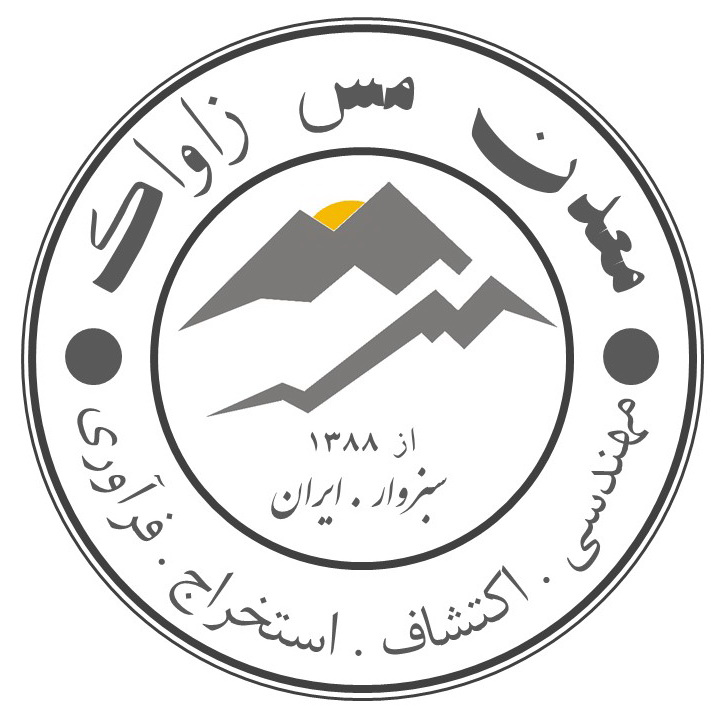Zavak copper mine is located in the structural zone of Iran (Aghanbati 2004) in the northeastern corner of the central Iran zone. Exposed rocks in this area include Eocene and Oligocene volcanic and sedimentary rocks as well as Quaternary sediments. Zavak mine is located in a planned anticline structure which is introduced in the 1: 100000 geological map of Davarz as Kahak anticline.
The oldest and most abundant rocks exposed in the anticline core are basaltic andesitic volcanoclastic sections and basaltic to trachyandesitic lavas shown on the Davarzen map as an Eubr unit. Copper mineralization is seen in this unit and is mostly in the form of copper oxide ores (malachite, azurite, and to a lesser extent of chrysocolla). The currently active oxide working chest of Zavak copper mine is located in this unit. On this unit, there are periodic splits of split basaltic andesite lavas, tracheal andesite basalts, trachyandesite, porphyry andesite trachyandesite, and volcanic section tuff, which is shown as Eut2 in the arbitrator map and has a rough morphology. In this unit, mineralization is seen in the form of sulfides, oxides, and pure copper.
There is a nummulitic tuff lime unit in the southern part of the Kahak anticline in the form of a light cream horizon that can be seen on a satellite image. This unit is shown on the Davarzan geological map as Eul and hosts scattered manganese anomalies as the lower back.
South of the Kahak anticline and to the east of the Zavak mine area, there is a sedimentary volcanic unit consisting of sandstone and dark-gray shale with some calcareous sand tuff, shown as the EOss unit in the geological map, and younger than the volcanic units. It is Eocene and Eo-Algosin. On this unit and sometimes equivalent to it, there is a unit of rotation of marl, sandstone, shale, and pale brown and yellow tuff sandstone, which has a significant area in the southern half of the Zavak mine area. This unit is shown in the geological map as the EOms unit. In this section, traces of copper mineralization can be seen in the form of pollution and veins. On this unit, there is a gray to brown conglomerate section with good hardness and medium matching, which is also exposed in the southern edge of Kahak anticline. The EOc unit also shows limited and scattered traces of mineralization.
Numerous dykes have cut off older assemblages, the general trend of which is parallel to the collection of parallel faults within the mine area.
Sardar manganese mine (the late engineer Ali Fazeli – http://www.manganese-sardar.com) is located in the northern edge of the Kahak anticline on the Nummulite lime section (Eul).


 پارسی
پارسی